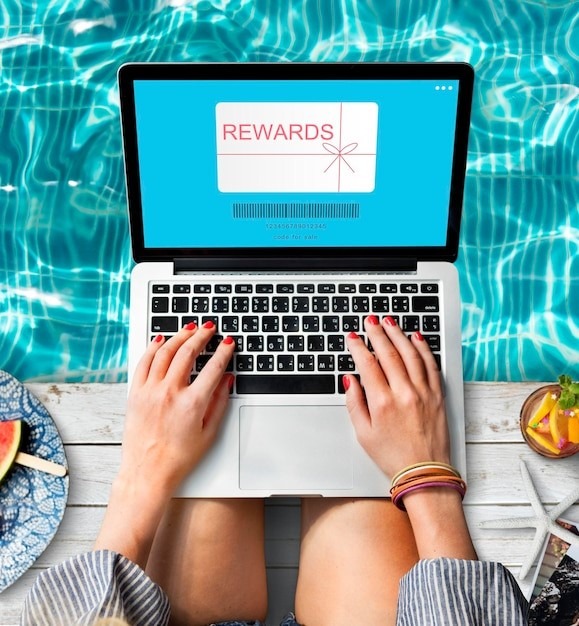The loyalty program is a strategic marketing lever that has been around for over a hundred years. The first appearance of a modern program dates back to 1793, according to the New York Time [0], with a merchant who rewarded his customers with copper tokens. The idea was quickly replicated by different retailers and competitors. Over the years, it has been adopted in various sectors such as banking and the aviation industry, which has been experimenting with reward programs for its customers for 30 years. The year 2020 was in many ways a year of new habits and experimentation for consumers, with 75% of them claiming to have tried a new shopping behavior during the pandemic [1], favored by the development of e-commerce and a move to online shopping; such behavior creates a customer volatility that can be problematic with insufficient brand brand branding. The implementation of loyalty plans, in its basic principle, focuses on rewarding customers with offers, discounts or incentives for shopping with brands, in order to allow them to keep them with them. In addition, new technologies and a growing penetration of eCommerce favor the production of data, which could facilitate the evaluation of the performance of these programs. This brings many new challenges to analyze and take into account in order to build a coherent engagement policy that brings satisfaction to your customers.
In October 2021, the FEMSA group unveiled the OXXO PREMIA program [2], aimed at rewarding customers for their purchases in stores throughout Mexico. After a 6-month pilot project in the state of Chihuahua, the initiative was launched nationwide with conclusive results. In only 4 months, it already has 4 million registered people [3], who accumulate points for every 10 pesos of purchase and receive free products. With the support of a mobile application, the group seeks to simplify and improve both the lives of its customers and the shopping experience. Aeromexico, on the other hand, announced its intention to become the sole owner of its Club Premier loyalty plan at the beginning of February 2022 [4], betting even more on this business model. Its total acquisition (Aeromexico already owned 51.14%) [DN2] will be negotiated for US$187.5 million in an economic context that is barely improving. The company announced for the first time positive earnings in the third quarter of 2021 [5]. This decision is aimed at continuing the “complete transformation of the customer experience” and proposing a “more relevant and agile program” to its customers. Relevance is one of Club Premier’s strengths, which today represents an ecosystem of 50 brands and products, working with 18 affiliated airlines worldwide, for a total of more than 5 million members, allowing it to create even stronger branding.

The programs are based on a portfolio of benefits offered to the consumer, one of the best known being a discount on the first purchase after registration. This promotion is used in some cases to retrieve only mail and digitize customers, but it can be a first step to facilitate the acceptance of a plan as H&M Membership does. Include several benefits or just a few, it depends on the construction of each plan; depending on the strength you want to give, you can offer access to early sales, offers or exclusive or pre-sale products for members. You can also propose free shipping and returns, or more specific benefits such as access to personalization services, preferential customer service, product maintenance or invitations to special events. The more benefit the loyalty plan has, the more relevant it could be, but a prior evaluation of the costs is essential to measure and control the investment and its impact on the business.
The materialization of a membership has always been a challenge in all industries, finding the ideal support for the customer to remember at every moment of their affiliation to a brand program or to justify it, is an important element of the customer journey to consider in the construction of the program. A common form is the physical card that must be presented to gain access to a commercial event or to make a purchase and benefit from certain advantages. For a long time, it was the object that ensured the relationship between consumer and brand. With the advent of the Internet and e-mail, this relationship could be taken to another level. Email made it possible to register customers in in-store CRM systems, and sometimes to associate the registration with a loyalty program. It allowed brands to maintain a long-distance relationship with the customer, sending their benefits through campaigns. In addition, new supports appeared with technology, which always offers other options but is accompanied by complexity. Smartphones and the possibility of developing mobile applications constitute an interesting technological boom. The cell phone is an object that almost everyone has today and represents a new opportunity to turn the consumer into a customer of your loyalty program. First, wallets appeared to digitize physical cards in one place, copying the barcode; then, brands’ own applications where loyalty plans associated to a user profile can be easily implemented, provided they ensure a sufficient customer experience and mechanisms that favor downloads and then usage. H & M Membership is one of the examples with an access conditioned by the download of its application, but having as motivation the welcome discount coupon. Then, the challenge of maintaining communication with the customer and the realization of purchases through the app is based on the creation of good content, updated and able to subtly send proposals to users with notifications or personalized campaigns.
For the business, one of the main benefits of loyalty plans is to understand the behavior of its customer ecosystem, based on the constant monitoring of transactional data that, together with a socio-economic analysis of the customer base, will provide useful buying patterns to establish product positioning, inventory management, pricing policies, as well as the development of marketing strategies segmented by customer groups. Consumers will also seek to redeem more points motivated by the benefit of the program, buying more frequently, which can trigger an increase in average ticket and revenue by up to 5-10% according to the 2016 Bond Loyalty report. It is also a powerful customer retention tool for building a long-lasting relationship with existing consumers and convincing them to bypass offers from competing brands, generating longer dwell time and decreasing churn rates. This is why, by implementing efficient loyalty plans, it should translate into an increase in Customer Lifetime Value, which is the indicator that represents the flow of future profits expected by a customer over the time he/she remains with the brand. Finally, studies have shown that working on retention costs up to seven times less than going for new customer acquisition [6]. Taking into consideration the retention factor, it is important to consider the effect of time in the analysis of results and not to expect an immediate effect on sales, but also to consider the effects on future profits and costs so as not to fall into the problem of generating sales at the expense of future liabilities, which is one of the major risks of loyalty programs.

Finally, the program’s value proposition is fundamental and surely the most complex stage in its design. In addition, defining differentiating benefits for the user in their customer journey with the brand is key to the sustainability of loyalty programs. The main causes of failure of these initiatives are both the lack of relevance and value of the reward, as well as an insufficient multichannel experience. However, in the current context it is important to rethink whether the benefits of pre-pandemic programs are still aligned with new consumer habits.
To the traditional challenges of a loyalty program, new challenges have emerged with the digital acceleration of the last few months, for example; the expansion of omnichannel. The pandemic has led to a disruptive change in consumer habits, and rethinking customer loyalty is necessary to keep up with the market and ensure a competitive experience with the highest standards. Brands have a duty now, to be loyal to their customers (and not so much the other way around) by providing personalized offers In SalesForce’s annual “State of the Connected Customer” study, 66% of consumers report expecting companies to understand their needs [8]. Operating or launching a loyalty plan cannot be an isolated initiative commissioned by a single unit, but rather, it is a business model that calls for a broad investment of resources derived from a global diagnosis, directly motivated by corporate management, in order to develop a strategy and roadmap that allows to go step by step with the development of the necessary requirements. The FEMSA example reflects a global digital strategy, with direct oversight from executive management. It is developed with synergy and innovation capacity to follow market and consumer trends in the industry. Today, data offers this opportunity to sanitize an ongoing project, detecting strengths and areas of opportunity, to the point of being able to test new operational forms, adapted to the reaction of the market.

